RFID Technology
The Mount Carmel Library in Kottayam, home of nearly 20,000 books, manuscripts and other items, has adopted Radio Frequency Identification (RFID) tags to identify and manage a big chunk of its large collection. The reliability of the system, its ease of operations and the flexibility of tagging all kinds of media easily are important in the library environment. Using RFID the library is finding misplaced books more quickly, maximising floor space with frequently requested items and streamlining the inventory process. When the RFID project is completed, the inventory checking is very easy and time saving. The library extended the system to access control, loan management and issuing- tagged badges to staff and students. RFID is used in this library for circulation operations and theft detection systems etc. The RFID system also acts as tracking systems that combine security and including easier and faster charge and discharge, inventorying and materials handling.
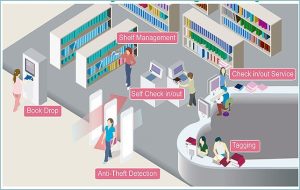 |
Components of RFID system in Mount Carmel College Library
a. RFID Book Tag
The heart of the system is the RFID tag, which can be fixed inside book’s cover or directly on to CDs and Videos and users ID cards. This tag is equipped with a programmable chip and an antenna and helps the system to identify each item and user in the library.
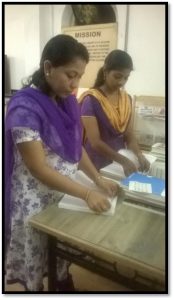 |
b. Integrated Reader
RFID Readers composed of a radio frequency module, a control unit and an antenna to interrogate electronic tag via radio frequency communication. The reader powers an antenna to generate an RF Field. When a tag passes through the field, the information stored on the chip in the tag is interpreted by the reader and sent to the server, which in turn, communicates with the integrated library system.
 |
Readers in RFID Library are used:-
- to charge and discharge library materials
- to check out library materials without staff assistance
- to check in library materials without staff assistance
- to verify that all materials leaving the library has been checked out
- to automatically discharge library materials and reactive security
- automated system for returning materials for proper area of library
- used for inventorying and verifying that materials is shelved correctly.
c. Server- Library Management System
The server is centre of comprehensive RFID systems. It is the communications gateway among the various components. It receives the information from one or more of the readers and exchanges information with the circulation database. This software includes the session initiation protocol, applications programming interface and a transaction database so that reports can be produced.
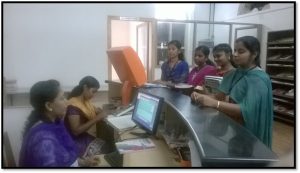 |
d. Hand held reader
The portable handheld reader can be moved along the items on the shelves without touching the documents. The data goes to a storage unit, which can be downloaded at a server later on, or it can go to a unit, which will transmit it to the server using wireless technology. The hand held reader is used to screen the complete book collection on the shelves for inventory control, to search for books which are mishleved and search for individual book requested.
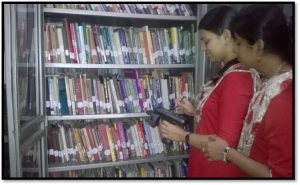 |
e. Anti-theft Gate Reader
Anti-theft gate reader is fixed on exit gate. It is pedestal gate for fixing left and right of exit gate. It has visible and Audible alarm on theft detection. RFID exit gate sensors at exits the Books tags and ID tags. The information on the tool tags going by and communicates that information to server. The server after checking the circulation database, turns on an alarm if the material is not properly checked out.
 |
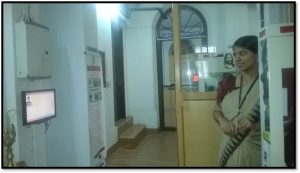 |
f. Book shelf check-in/ check-out machine (Charging and discharging drop desk)
The RFID reduces the amount of time required to perform circulation operations ie charging and discharging process. For the users, RFID speeds up the borrowing and return procedures. It helps the librarians to be more productive and interesting duties of the library. Book shelf check in / check-out machine helps to self issues Books, self return and RFID card reading option etc.
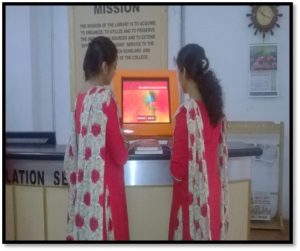 |
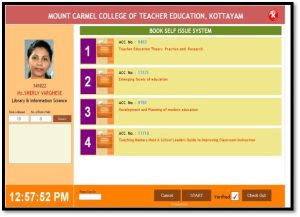 |
RFID system which is implemented in Mount Carmel College Library increases the efficiency and reduces time and cost. It is also provide security for the range of different media materials in library. This technology also helps the circulation and inventory control, which helps allocate human and financial resources. A unique advantage of RFID system is their ability to scan book on the shelves without tipping them out or removing them. Finally RFID system in the Library is not a threat but it speeds up book borrowing and inventories and frees staff to concentrate on more user- services tasks in the library.